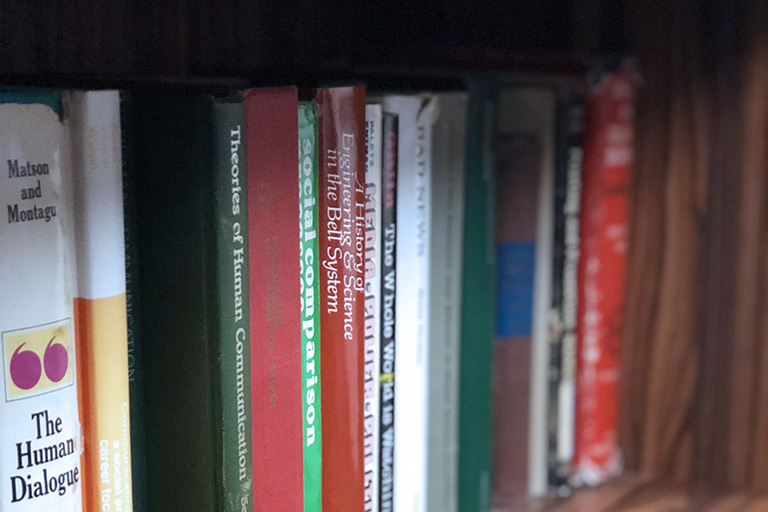Atkin, C.K., Martell, D., Smith, S.W., & Greenamyer, J. (2004). Specialized social norm message strategies focusing on celebratory drinking. Report on Social Norms, 3, 4-5.
Bente, G., Rüggenberg, S., & Krämer, N.C. (2004). Social Presence and Interpersonal Trust in Avatar-Based, Collaborative Net-Communications. Proceedings of the 7th Annual International Workshop Presence 2004, Valencia.
Bresnahan, M.J., Chiu, H.C, & Levine, T.R. (2004) Self-construal as a predictor of communal and exchange orientation in Taiwan and the United States. Asian Journal of Social Psychology, 7, 187-203.
Chory-Assad R.M., & Tamborini, R. (2004). Television sitcom exposure and aggressive communication: A priming perspective. North American Journal of Psychology, 6, (3), 415 – 422.
Donohue, W.A. (2004) Critical moments as flow in negotiation. Negotiation Journal, 20, 147-152.
Donohue, W.A. (2004). Read my lips: Code switching in negotiation. Ivey Business Journal, July/August (pp. 1-7).
Donohue, W.A., & Bresnahan M.I. (2004). Communication issues in mediating cultural conflict. Reprinted in D. Busch (Ed.), Perspektiven interkultureller Mediation, Kommunikations wissen-schaftlic Grundlagen Triadischer Verstandigung. Frankfurt/Main: Peter Lang Publications.
Donohue, W.A. & Taylor, P.J. (2004). Testing the role effect in terrorist negotiations. International Negotiation, 8(3) 85-105.
Ellis, J.B., & Smith, S.W. (2004). Memorable messages as guides to self-assessment of behavior: A replication and extension diary study. Communication Monographs, 71, 97-119. doi:10.1080/03634520410001691456
Holmstrom, A.J. (2004). The effect of media on body image: A meta-analysis. Journal of Broadcasting and Electronic Media, 48, 196-217. doi:10.1207/s15506878jobem4802_3
Lucas, K., & Sherry, J.L. (2004). Sex differences in video game play: A communication-based explanation. Communication Research, 31, 499 - 523.
Roberto, A.J., Meyers, G., Boster, F.J., & Roberto, H.L. (2004). Assessing the Get Real about Violence curriculum: Process and outcome evaluation results and implications. Health Communication, 16, 451-474.
Robinson, J., Silk, K.J., Parrott, R.L., Steiner, C., Morris, S., & Smith, C. (2004). Health-care providers’ counseling about sun-protection as a predictor of patients’ skin-cancer-prevention behavior, self-efficacy, and knowledge. Preventive Medicine, 38(3), 251-257. (ISI: 3.77)
Sherry, J.L. (2004). Media effects theory and the nature/nurture debate: A historical overview and implications for future research. Media Psychology, 6(1), 83-109.
Sherry, J.L. (2004). Media enjoyment and flow. Communication Theory, 14(4), 328-347.
Sherry, J.L. & Brown, C. (2004). The beginning of the internet. In H. Bidgoli (Ed.). The Internet Encyclopedia (pp. 114-123). John Wiley.
Smith, S.W., Kopfman, J.E., Lindsey, L.L.M., Yoo, J., & Morrison, K. (2004). Encouraging family discussion on the decision to donate organs: The role of the willingness to communicate scale. Health Communication, 16, 333-346.
Smith, S.L., Lachlan, K., Boyson, A.R., Wilson, B.J., Tamborini, R. & Weber, R. (2004). Brandishing guns in American media: Two studies examining how often and in what context firearms appear on TV and in popular video games. Journal of Broadcasting & Electronic Media, 48 (4), 584-606.
Tamborini, R., Eastin, M., Lachlan, K., Skalski, P., Fediuk, T., & Brady, R. (2004). Violent virtual video games and hostile thoughts. Journal of Broadcasting & Electronic Media, 48, (3), 335-357.
Wittenbaum, G.M., & Bowman, J.M. (2004). A social validation explanation for mutual enhancement. Journal of Experimental Social Psychology, 40, 169-184.
Wittenbaum, G.M., Hollingshead, A.B., & Botero, I.C. (2004). From cooperative to motivated information sharing in groups: Moving beyond the hidden profile paradigm. Communication Monographs, 71, 286-310.
Wittenbaum, G.M., Hollingshead, A.B., Paulus, P.B., Hirokawa, R.Y., Ancona, D.G., Peterson, R.S., Jehn, K.A., & Yoon, K. (2004). The functional perspective as a lens for understanding groups. Small Group Research, 35, 17-43.
